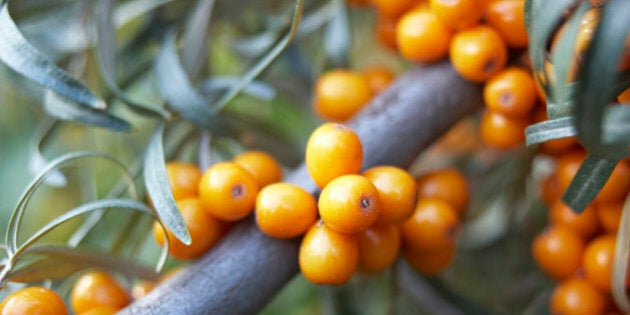
These five foods may not be mainstays in your diet now. But these nutritional powerhouses are the superfoods of the future.
1. Seaweed
The 411: Whole seaweed is wrapped around your sushi and served as a snack; it's also used as a thickener, listed as "carrageenan" on package labels.
The benefits: It only makes sense that seaweed, which grows in mineral-filled seawater, has all the 56 minerals and trace elements your body needs. Plus, it's packed with protein (depending on the variety, it can have seven to 47 grams per 100-gram serving) and is rich in dietary fibre (29 to 62 grams per 100-gram serving). And it offers all of that in very few calories.
How to eat it: Straight up. Wakame, a popular type of seaweed, has been a culinary staple in Japan, Korea and China since prehistoric times. It is sold dried, so just soak it and toss it in soy sauce with sesame seeds.
2. Insects
The 411: The next time you spot a grasshopper, think dinner. According to a 2013 report by the Food and Agriculture Organization of the United Nations, more than two billion people worldwide currently eat insects as part of their traditional diets. Bugs may also be part of the solution to the global food shortage. Last fall, McGill University students won the $1-million Hult Prize for their entrepreneurial idea to use organically farmed crickets to promote insect farming for global food consumption among poor urban communities.
The benefits: June bugs, caterpillars and crickets are sources of protein, calcium, iron and zinc — nutrients typically associated with animal products. As an added bonus, they're rich in good fats, just like fish.
How to eat it: Granted, edible bugs are hard to come by in North America, unless you're a knowledgeable forager with skill and determination. But many populations in the Southern Hemisphere enjoy battered and fried insects like we enjoy popcorn. You won't find food-grade crickets in grocery stores any time soon, but you can find chocolate-covered scorpions and spicy bug paste from Thailand online (if you really want to).
3. Millet
The 411: Millet is used more for birdseed than side dishes, but it may be the next gluten-free wonder grain. Easily grown in arid land, this whole grain is pale yellow, round, tiny and chewy.
The benefits: It's rich in magnesium, manganese and phosphorus.
How to eat it: Millet contains a more complete amino acid profile than some common grains, such as white rice. Plus, the two grains cook the same; millet even lends itself well to a pilaf or risotto-style dish. It can also be ground into flour for use in baked goods to increase protein and fibre.
4. Sap water
The 411: Freshwater is an endangered resource and, in Canada, it's often hidden in an unlikely plant source. For centuries, maple trees have been tapped for sap, the water content boiled away to produce maple syrup. Today, as a first step, some companies are filtering the water and separating it from the 15-percent boilable sugar solids. Water is 85 percent of the volume of the approximately one billion litres of maple sap harvested in Quebec each year, and it is often thrown away. Quebec company De L'Aubier has transformed the process and is now capturing the high-mineral water, bottling and selling it in fine food shops and restaurants across the country.
The benefits: The maple syrup byproduct is rich in minerals: Sap water contains potassium, calcium and manganese.
How to drink it: Chill and serve as a palate cleanser.
5. Sea buckthorn
This drought-tolerant, low-maintenance shrub produces bright yellow and orange berries that are extremely high in antioxidants and vitamins.
The benefits: Its leaves and flowers are so potent that one study published in the Journal of Biological Sciences claims therapeutic benefits ranging from soothing skin inflammation to calming digestive discomfort. The plant is also high in vitamin E, other antioxidants and essential fatty acids?a rarity in fruits.
How to eat it: Eaten fresh, the berries are slightly tannic and bitter, but crushed or cooked they become buttery. You may have to search, in season, at farmer's markets and health food stores to find the berries, fresh or frozen. Many health food stores stock juices or supplements. If you are really keen, find a nursery that will ship you your own tree.
More from Canadian Living:
